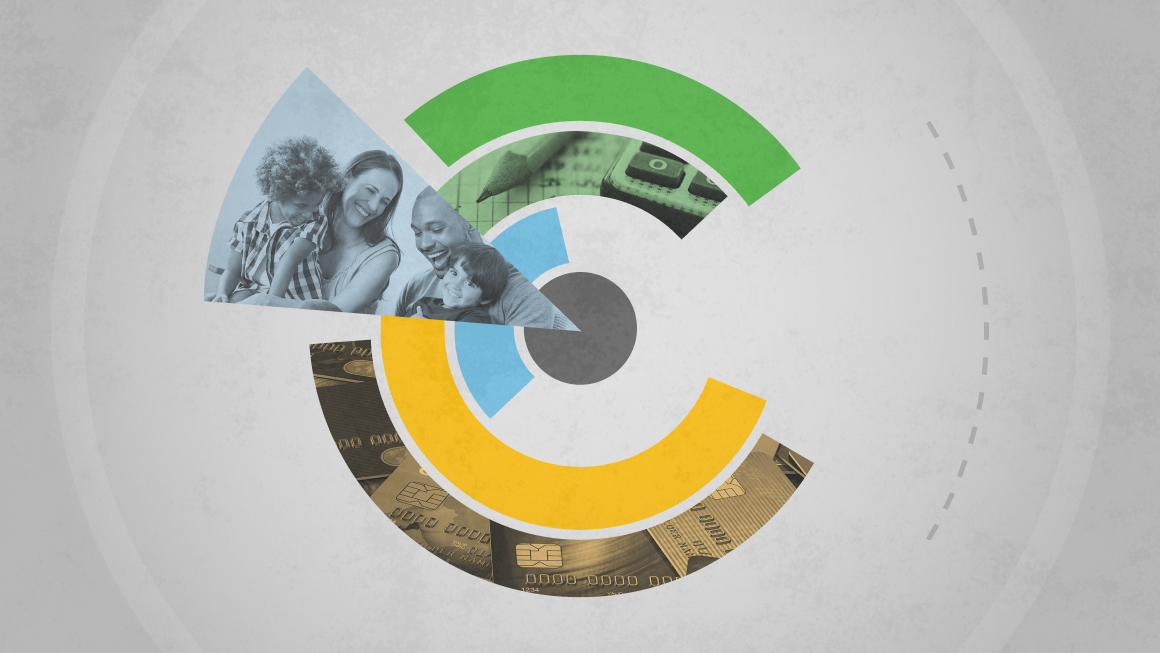
Capturing a clear picture of Americans’ financial lives involves looking at not only financial metrics but also the circumstances that shape people’s everyday lives, such as access to health care and affordable child care.
But creating this holistic understanding can be difficult. Researchers, policymakers, and local officials must navigate a fragmented data landscape, which makes it challenging to understand people’s financial lives, much less develop solutions to improve them.
For example, to determine how many households have at least three months of living expenses in savings, you could consult the Financial Health Pulse (PDF). To figure out how many people recently went without medical care because they couldn’t afford it, you could look at the Survey of Household Economics and Decisionmaking (PDF). The Survey of Consumer Finances is considered the go-to source for comprehensive data about households’ balance sheets, and the American Community Survey allows researchers to explore local-level findings.
A new tool created by the Urban Institute’s Financial Well-Being Data Hub addresses this challenge by allowing users to browse financial well-being metrics across publicly available datasets. The tool’s more than 300 metrics include core measures of financial well-being, such as the value of household assets and debts, and contextual factors that shape people’s financial lives, such as disruptions due to climate-driven events. Users can filter metrics by data source, geography, and topic.
By working across datasets, students can explore various dimensions of people’s financial lives, researchers can assess the drivers of financial well-being across disciplines, and local decisionmakers can better understand the needs of their communities. With a more holistic understanding of households’ financial well-being, stakeholders across the financial well-being ecosystem can develop solutions that ensure all people—no matter their zip code, race, gender, or income—have the financial security to invest in their future, provide for their families, and live with dignity.
Consulting multiple data sources can shed light on peoples’ financial lives
Researchers and decisionmakers can use this new tool to build a more complete picture of Americans’ financial well-being and explore the contextual factors that shape people’s behaviors and attitudes.
For example, the tool includes several measures that shed light on how people are coping with inflation. According to the Financial Health Pulse, 29 percent of households in 2021 reported feeling stressed by inflation (PDF). Those who reported higher levels of inflation-induced stress saw their financial health decline more than those who did not report inflation-related stress.
The US Census Bureau’s Household Pulse Survey adds context: households with low incomes were more likely to be worried that inflation would persist. About 89 percent of households with incomes below $50,000 said they were concerned inflation would continue through 2023.
The real-world implications of these sentiments are reflected in the Survey of Household Economics and Decisionmaking. In response to inflation in 2023, 51 percent of households reduced their savings, and 49 percent delayed a major purchase. Eighteen percent said they worked more or got another job, and 15 percent said they increased their borrowing.
Alone, each of these metrics is an interesting statistic; together, they paint a rich and complex portrait of people’s financial lives. By improving researchers’ awareness of the data at their disposal, this new tool ensures decisionmakers can develop solutions to improve people’s financial well-being that are rooted in a holistic understanding of people’s financial lives.
How researchers and decisionmakers can use the tool
Researchers, community organizations, government agencies, and other stakeholders can use this tool to identify metrics to explore important and timely questions:
- How have the rising costs of housing, health care, food, and other living expenses affected households’ long-term financial security?
- How have recent developments regarding student loans and medical debt affected households' ability to manage their debt?
- How have climate-driven disruptions, such as natural disasters or extreme weather events, affected a community's financial resiliency?
- How are people using new technologies to manage their finances? How do these trends vary across demographic groups and locations?
With a clearer understanding of Americans’ financial lives, decisionmakers across the financial well-being ecosystem can develop solutions to ensure all people have the resources they need to thrive. As we iterate on this tool, we welcome suggestions for enhancements that can help drive effective solutions to advance equity and improve households’ financial well-being.
Let’s build a future where everyone, everywhere has the opportunity and power to thrive
Urban is more determined than ever to partner with changemakers to unlock opportunities that give people across the country a fair shot at reaching their fullest potential. Invest in Urban to power this type of work.